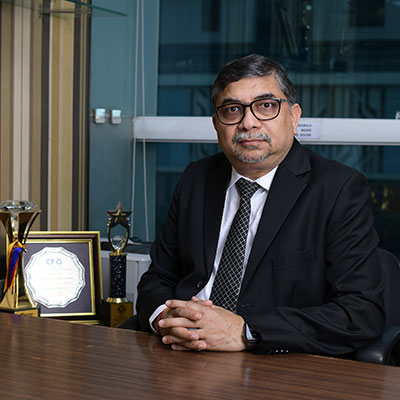What are the Challenges for HR while managing a Multi- multi-generational workforce? | HARISH KUMAR AGARWAL | Group CFO | Head – Legal and HR | Kamdhenu Limited
 Workplaces today are an eclectic mix of employees from different generations. From Baby Boomers to Gen X and Millennials to Gen Z, each generation carries with them distinct work traits and accompanying expectations from the workplace. It is a convergence of experiences, values and worldviews and that is shaping and reshaping the very DNA of organisations worldwide.
Workplaces today are an eclectic mix of employees from different generations. From Baby Boomers to Gen X and Millennials to Gen Z, each generation carries with them distinct work traits and accompanying expectations from the workplace. It is a convergence of experiences, values and worldviews and that is shaping and reshaping the very DNA of organisations worldwide.
For human resource professionals, this convergence presents both a challenge and a remarkable opportunity. Managing a multi-generational workforce is not just about mitigating differences, it is about designing a culture that bridges generations and build a thriving eco-system that supports organisational growth. The organizations that get this right not only future-proof themselves but also gain a decisive competitive edge. Baby Boomers value loyalty, discipline and hierarchy in the workplace. This generation of workers built their careers on hard work, face-to-face communication and stability. Generation X workers are independent thinkers who are generally self-reliant and pragmatic. Millennials, who grew up straddling both the analog and digital era are purpose-driven and ollaborative. The younger generation of workers or the Gen Z are digital natives who seek authenticity, inclusion and constant growth.
Managing these generational differences in values might at a glace seem like a daunting challenge. But for HR leaders, it represents a rich pool of capabilities that can deliver astounding results if meaningfully leveraged. The frictions of diversity are fertile hotbeds for innovation, the Baby Boomer’s depth of experience and the technological fluency of Gen Z employee’s when combined often sparks magic in the workplace. A rather innovative HR trend is to expand the traditional mentorship program into a mutual mentorship model where there is a healthy exchange between institutional knowledge of seniors and technological fluency of juniors. Such a model promotes a culture of respect and satisfies curiosity which are both invaluable to the workplace.
A multi-generational workforce is a great stabilizer and strengthens organisational resilience. HR departments must therefore strive for inclusivity and design policies that benefits all generations. While inclusivity and multi-generational workforces are important buzzwords, there are practical challenges in managing such a workforce. For HR Departments, the biggest challenges in managing such a diverse workforce lies in how different generations communicate. From face-to-face meetings, e-mails and social-media based communication, each generation has their preferred medium for communicating. Managing the varying preferences and fostering a healthy environment by setting out clear guidelines on the medium of communication, response time and etiquette to be followed is emerging as a crucial function for HR across organisations.
Recurring incidences and anecdotes on employee commitment to work or the supposed lack of it, highlight an important challenge for HR today. While older generations may equate commitment with physical presence, the younger generation will likely point at outcomes to demonstrate commitment. Performance models that give enough weightage to results delivered in addition to the number of hours logged can help HR bridge these differing philosophies and present a more progressive measure of dedication in the workplace. Traditionally, career progression is vertical and predictable. Today career progression and growth have evolved into a multidirectional framework where employees can grow vertically, laterally and diagonally. This shift indicates the changing aspirations of generational workers from stability to mobility and autonomy. HR must build systems that accommodate all these journeys.
The dynamism of multi-generational workplace has transformed the role of HR today into one that can be described as culture architect. Along with the traditional roles like managing payrolls, healthcare benefits and leave management, HR today has to develop and maintain performance metrics, learning programs and benefits that caters to the different generations of workers to transform what could very well be a challenge into a strategic asset. Doing that is not just about eliminating differences, it is about building workplaces that value experience and innovation equally and orchestrating them to convert generational diversity into organizational harmony based on empathy, respect and shared purpose.


